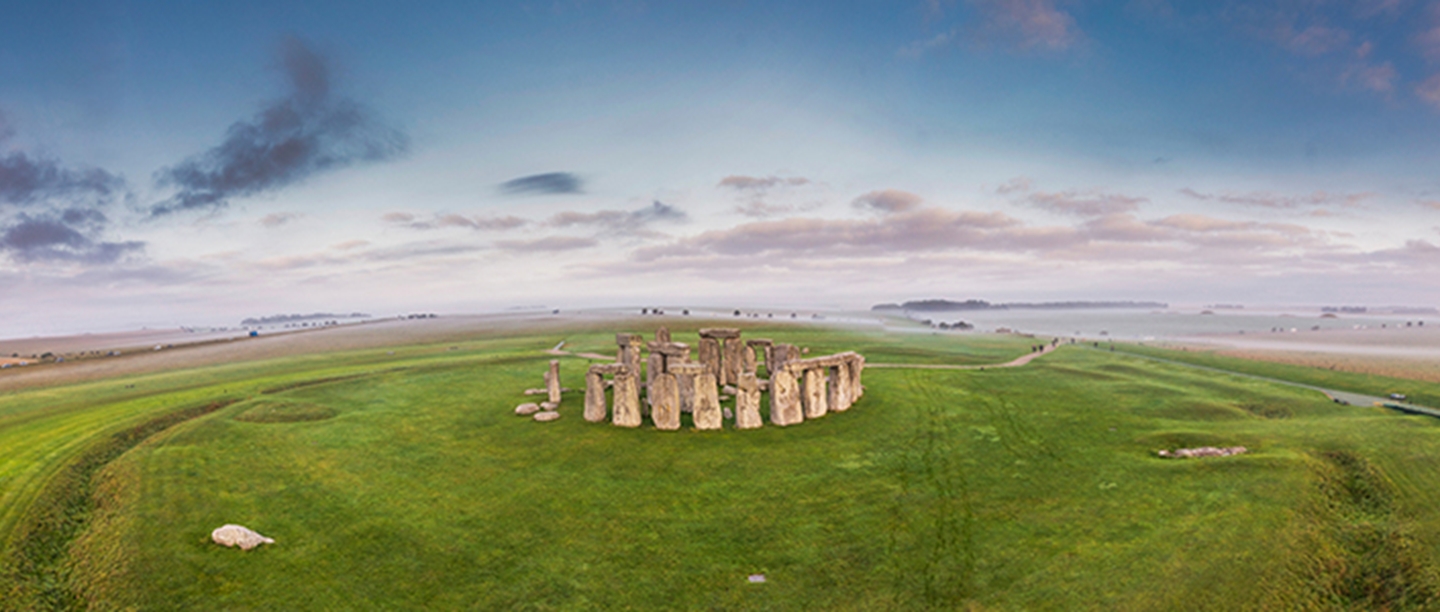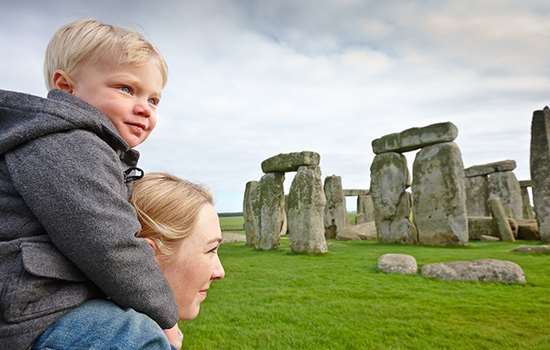
In medieval times, pilgrimage was considered to be an exercise in healing the mind, body and soul. This idea of a healing physical and spiritual journey has been explored in a recent project called Human Henge, run by the Restoration Trust in partnership with English Heritage, Richmond Fellowship, the National Trust and Bournemouth University.
Human Henge explored the links between historic landscapes and mental well-being using Stonehenge and the surrounding landscape as the setting for cultural therapy. The project recruited people with a range of needs from across Wiltshire to take part in a series of events and workshops.
We caught up with two of the organisers and a participant to find out more about what was involved for those who embarked on this special journey into the past.
Why was Stonehenge chosen for this project?
Professor Timothy Darvill, a prehistorian from Bournemouth University and one of the main organisers of the Human Henge project, explains the rationale.
“We felt that Stonehenge would be a good venue for researching the development of therapy that might benefit those with mental illness and improve general well-being.
The idea that in prehistoric times Stonehenge was a healing centre and a focus for pilgrimage, can be traced back to medieval texts telling us that the stones were brought to Stonehenge because of their supposed magical powers – as healing stones. This was a nice historical note to start from, but when we began our research Geoff Wainwright (an archaeologist specialising in prehistory) and I found that the sources of the stones in the Preseli Hills in Southwest Wales were associated with the holy wells and springs which are considered to have healing properties. So we had this interesting coincidence of the same stories being present in the hills where the stones came from and also Stonehenge itself.
Cursus Barrow Cemetery in the Stonehenge landscape
The important aspect of Human Henge is the sense of an experiential journey to understand the past, our heritage and oneself. Such studies are important in a number of ways. Sites like Stonehenge are hugely significant and valuable in their own right, but they are also places where we can develop modern-day practices. Using them as a crucible for this kind of work is a very good way of making them pay their way in the modern world.
The other side is that mental health and mental wellbeing are very important issues. It’s only in the last decade or so we have come to understand that people need to work quite hard at enhancing their mental well-being. Its not just a question of issuing pills, and using the clinical approaches – although both are important – there are other approaches that can be used too and that is what we are researching through the Human Henge project.”
What is the Restoration Trust and what did Human Henge entail?
Laura Drysdale is the director of the Restoration Trust and managed the Human Henge project.
“At the Restoration Trust, we do culture therapy for people with mental health problems. This project was a brilliant opportunity to work in that amazing landscape, and draw attention to what can be done in such places.
By having a mixture of creative, learning and social engagement, participants were meeting each other and learning to do things they had never done before.
At the beginning of the project, people were naturally shy of each other and nervous about the whole experience. When we asked people what they were most nervous about, they almost always mentioned that they were apprehensive about meeting new people. As the project went on, this became the thing that people were most happy with.
People developed quite profound connections with each other, with history and with their own sense of place. People were really moved by the experience, it was astonishing to be a witness to. It was fantastic and very moving.
It’s really vital that we get excellent quality research into the outcomes of this project. We’re now in the research phase so we will follow up with participants in a year’s time. There’s a whole lot of post project activity currently happening which culminates at a conference at Bournemouth in June 2018.”
What did people get from participating in Human Henge?
We asked one of the 20 people who took part in the Human Henge project about his experiences.
“I have borderline personality disorder, and one of the ways I protect myself from my disorder is I disassociate myself from the world. So I needed some help building up my social skills and contacted the Richmond Fellowship. An offer came up to do the Human Henge project and I jumped at the chance. I knew that we would have some time to spend inside Stonehenge alone, and I couldn’t wait to take part.
Pottery made by the participants of Human Henge
I don’t really talk to anyone. I am usually the person you find in a kitchen at a party with a cloth in their hand, cleaning up and avoiding conversation. Meeting people on the project has become a positive thing. We are still in contact and arrange to do things as a group, like our own independant support network. As with all things in life, you have to overcome these things, so I have been pushing forwards.
There was so much that went on during the project. We made pottery, explored the landscape, gazed at the night sky. It was a wonderful experience. It has all had a very beneficial effect on me, it was an interesting experience that gave me a purpose. It has created some very fond memories for me – and a lot of photographs!
Projects like this are very important. Having a mental health problem can make life difficult and in most cases the treatment offered is very limited. There isn’t anything unique or interesting. Most treatments and therapies hold you for a few hours in a room, where as exploring something new gives you a thirst to do things. It gives you a sense of adventure.”
Human Henge is a project involving English Heritage, Restoration Trust, The Richmond Fellowship, Bournemouth University, National Trust, Avon and Wiltshire Mental Health Partnership Trust, Heritage Lottery Fund and the Amesbury Area Board
Discover more about Stonehenge
You might also enjoy:
- Watch how to craft a Neolithic flint axe and make prehistoric pottery on our YouTube channel.
- Read more about the significance of Stonehenge
- Interactive maps of the Stonehenge landscape
- Find out more about the replica Neolithic houses outside the visitor centre
Stonehenge is open 09:30-19:00, 7 days a week. Last admission time is 2 hours before the advertised closing time, and we strongly recommend booking your timed ticket in advance. Entrance is free for English Heritage and National Trust Members. For non-Member ticket prices, please visit our Plan Your Visit pages.


